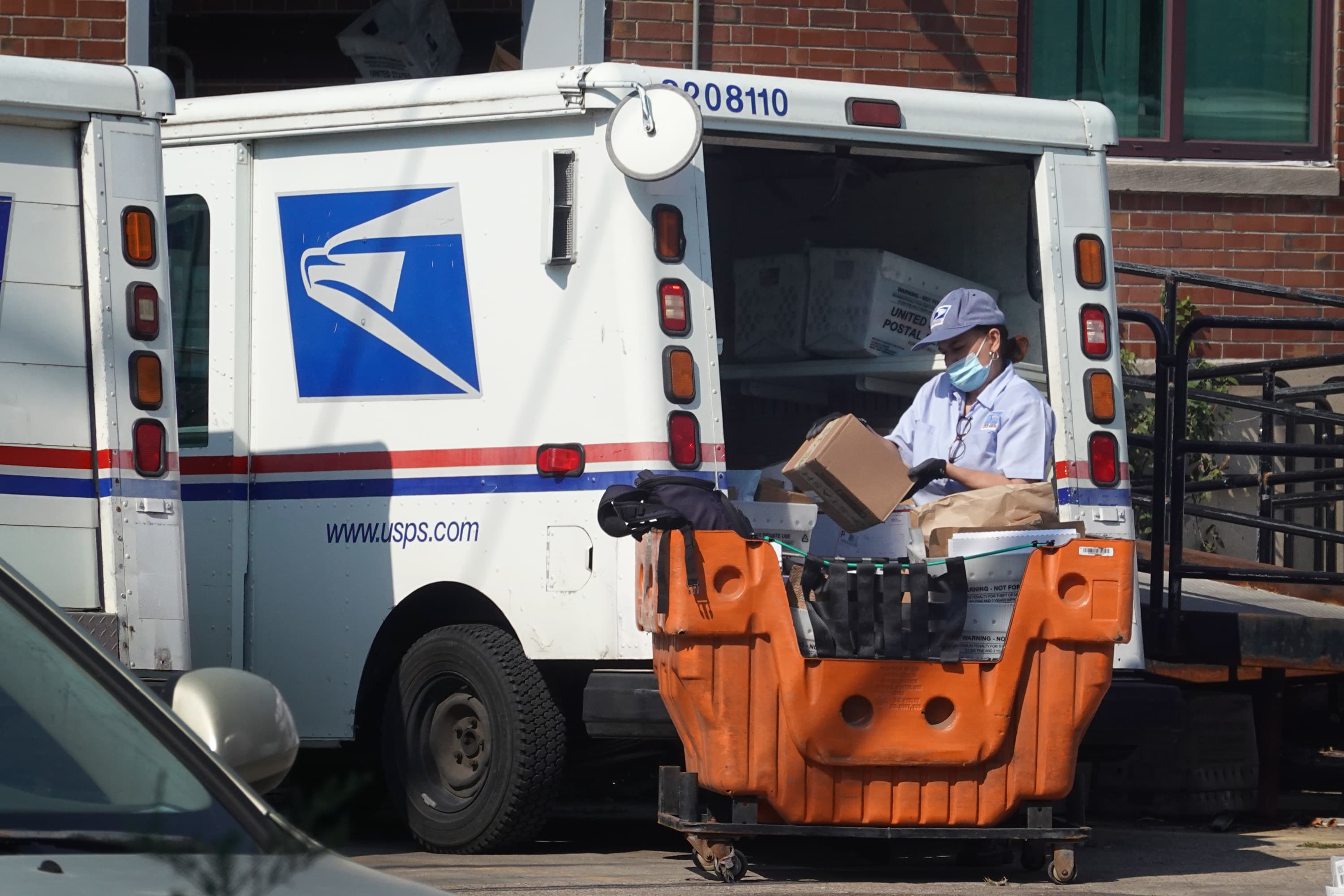
A postal worker loads a delivery truck on October 01, 2021 in Chicago, Illinois.
Scott Olson | Getty Images
The Biden administration on Wednesday attempted to halt the U.S. Postal Service’s plan to spend up to $11.3 billion to replace its delivery fleet with thousands of gas-powered vehicles, arguing that the vehicles will worsen climate change and public health.
The EPA and the White House Council on Environmental Quality, in a letter to the Postal Service, urged the Postal Service to conduct an updated and more detailed technical analysis and hold a public hearing on its plan.
The Postal Service’s plan would blunt the president’s pledge to replace its federal fleet of 600,000 cars and trucks to electric power and slash the government’s carbon emissions by 65% by 2030. The administration has also committed to cutting U.S. greenhouse gas emissions nearly in half by the end of the decade and transition the economy to net-zero emissions by mid-century.
“The Postal Service’s proposal as currently crafted represents a crucial lost opportunity to more rapidly reduce the carbon footprint of one of the largest government fleets in the world,” Vicki Arroyo, associate administrator of policy for the EPA, wrote in a letter.
“The Postal Service’s proposal also has significant implications for the nation’s air quality and public health,” Arroyo wrote. “The cleaner the Postal Service vehicles that are deployed in communities across the country, the more air quality and public health will be improved.”
The news was first reported by The Washington Post.
Despite a rise in electric vehicles sales in the U.S. in recent years, the transportation sector is one of the largest contributors to U.S. greenhouse gas emissions. It represents about one-third of emissions every year.
The Postal Service operates about 230,000 vehicles, which is roughly one-third of the government fleet. Postmaster General Louis DeJoy, who was nominated to the board by former President Donald Trump, last year committed to a plan to convert only 10% of its new trucks to electric power.
“This action will lock in highly polluting vehicles for at least 30 more years (beyond 2050) and is inconsistent with national, and many state and local goals for GHG emissions reductions,” Arroyo wrote.
Some of the Postal Service’s major competitors, including Walmart and FedEx, have committed to achieving all-electric fleets by 2040. Additionally, Amazon and UPS have committed to net-zero emissions by 2040 and 2050, respectively.
Environmental groups have sharply criticized the Postal Service’s plan not to purchase an all-electric fleet.
Katherine García, direct of the Sierra Club’s Clean Transportation for All campaign, praised the administration’s push against the plan and called the shift to an all-electric Postal Service fleet a “no-brainer.”
“Electric mail trucks will reduce noise, air and climate pollution in communities across the nation, while slashing fueling costs,” García said. “There’s no reason USPS should be locking in decades of fossil fuel consumption by considering a fleet of 90 percent gas-powered trucks.”
The Postal Service did not immediately respond to CNBC’s inquiry.




